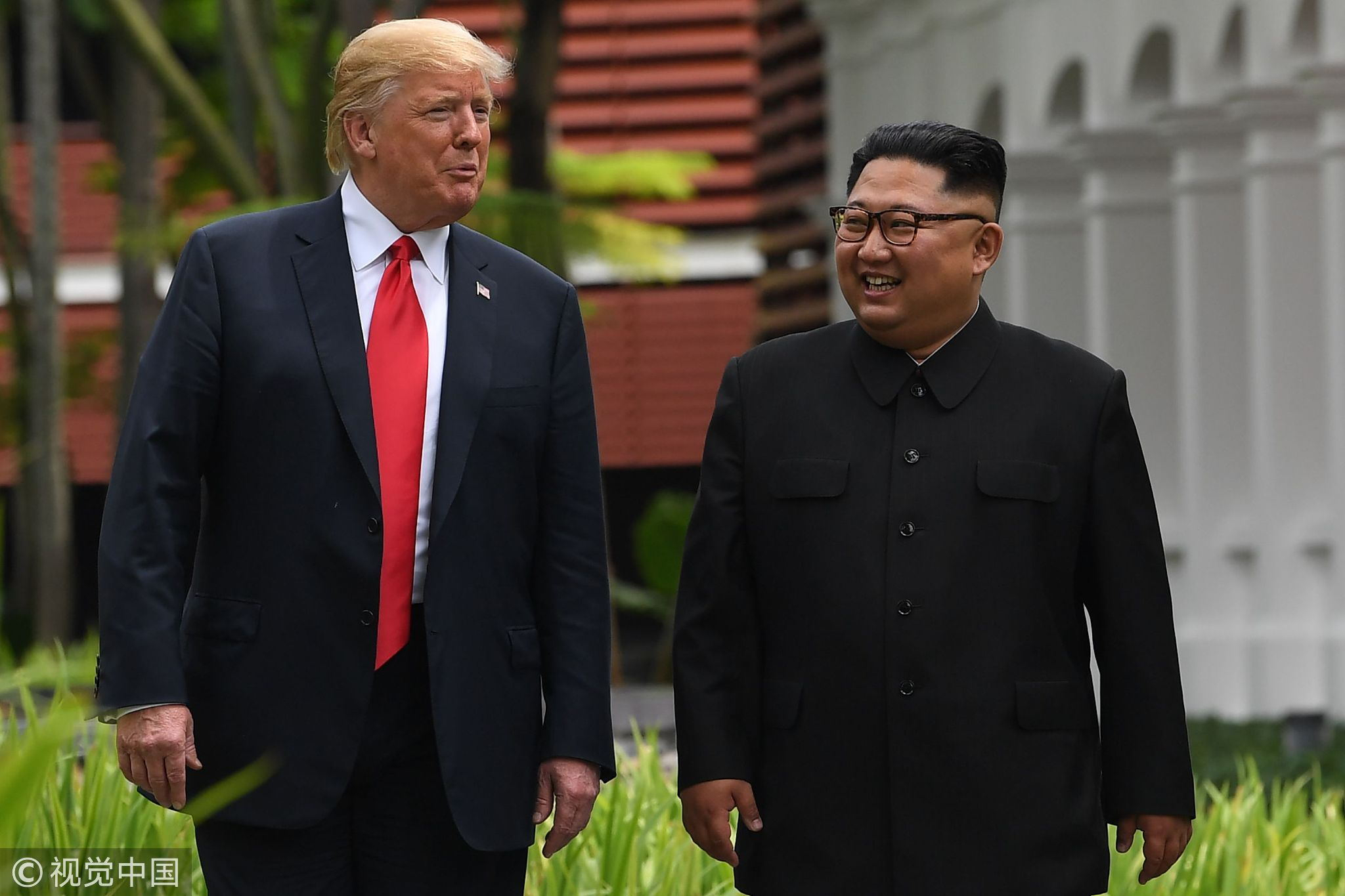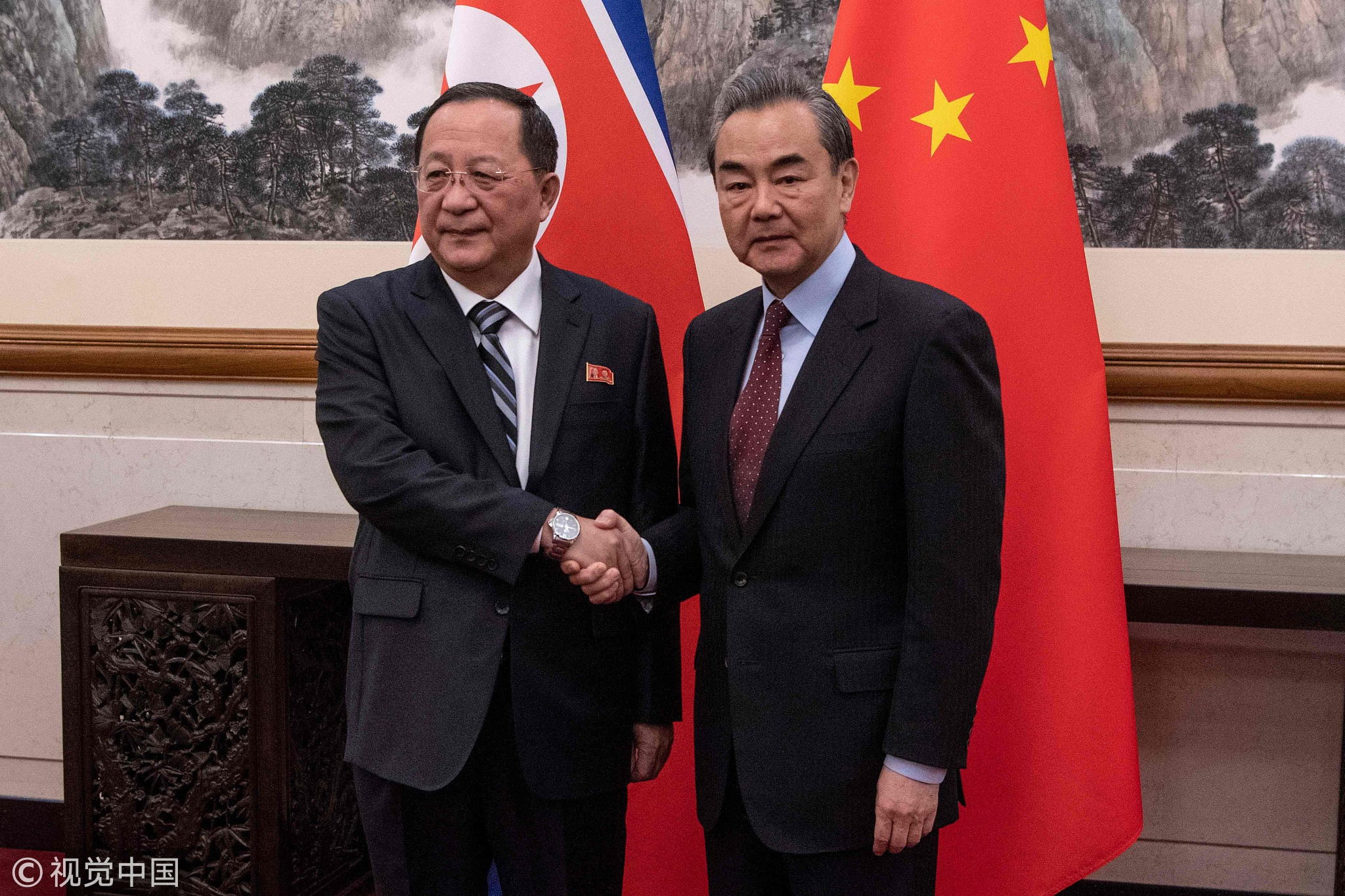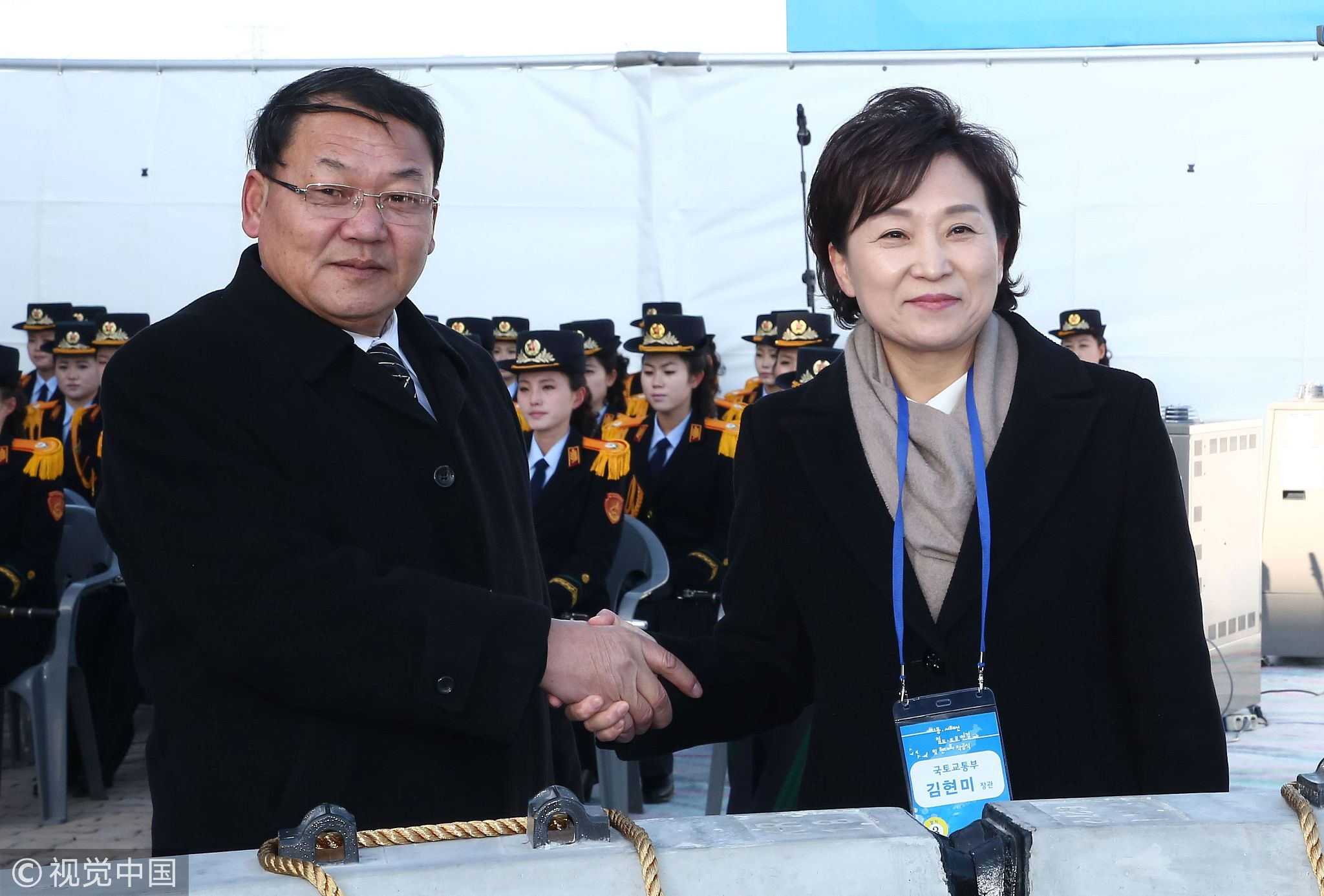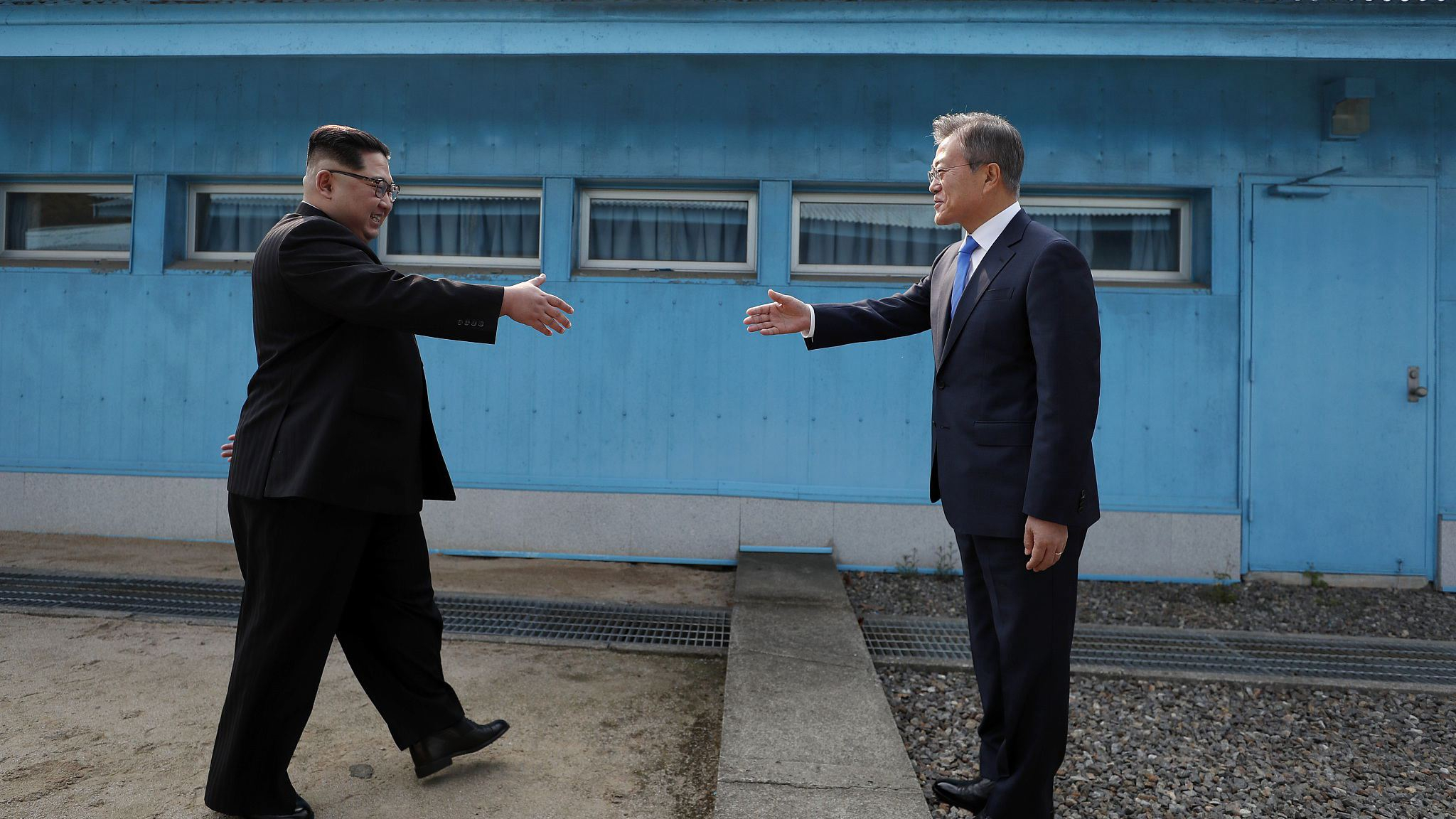Editor’s note: 2018 was an eventful year, with many historic moments that changed the fates of millions of people around the world. They were more than just narratives in the headline news but major twists and turns that shaped the world order in different dimensions. Among them, the DPRK nuclear issue has gotten on the international community's nerves. Zhang Chi, a research fellow of Northeast Asia Studies at the Shanghai University of Political Science and Law, shares his insights with CGTN.
2018 was a major turning point in the nuclear issue on the Korean Peninsula, shifting the situation from a critical state of imminent war to a new stage of hope and progress. In 2017, the U.S. and the Democratic People's Republic of Korea (DPRK) were almost on the verge of a war.
The DPRK not only conducted its sixth nuclear test, but also tested the Hwasong-14/15 intercontinental ballistic missile (ICBM), gaining the initial ability to attack the U.S. mainland. President Donald Trump also announced that he would take military measures, and there were debates about a plan of a limited military strike against the DPRK.
However, since DPRK leader Kim Jong Un gave a signal of intent to improve relations with the Republic of Korea (ROK) in his New Year message for 2018, the situation on the Korean Peninsula has taken a dramatic turn.
In February, a high-level delegation from the DPRK took the opportunity of PyeongChang Winter Olympics to visit the ROK to engage in an "ice-breaking" tour.
In April, Moon Jae-in and Kim Jong Un held the third head-of-state summit in Panmunjom and issued the Panmunjom Declaration. In September, Moon Jae-in visited Pyongyang, and inter-Korean relations improved significantly. From March to June, Kim Jong Un visited China three times in a row, and China-DPRK relations quickly warmed up. On June 12, Kim Jong Un and Trump held a DPRK-U.S. summit in Singapore and signed a "comprehensive" agreement aimed at denuclearizing the Korean Peninsula.
These successive events have created favorable conditions for the resolution of the DPRK nuclear issue. In addition, Kim Jong Un reiterated his commitment to the denuclearization of the Korean Peninsula on several major occasions. The DPRK also announced the official abandonment of the Punggye-ri nuclear test site and the closure of the Tongchang-ri missile test site. Trump also said he would provide security assurance for the DPRK. On the whole, the DPRK nuclear issue moved in a positive direction throughout 2018.

DPRK leader Kim Jong Un (R) walks with U.S. President Donald Trump (L) during their historic U.S.-DPRK summit, at the Capella Hotel on Sentosa island in Singapore, June 11, 2018. /VCG Photo
DPRK leader Kim Jong Un (R) walks with U.S. President Donald Trump (L) during their historic U.S.-DPRK summit, at the Capella Hotel on Sentosa island in Singapore, June 11, 2018. /VCG Photo
China has contributed greatly to the emergence of this situation. On one hand, China has played a leading role in easing the tension on the Korean Peninsula, and has made efforts to promote communication and coordination among relevant stakeholders. These efforts have been generally recognized by the international community.
On the other hand, as a major power, China has been an important backstop throughout the process. China has always been upholding the "three principles" that insist on the denuclearization, no war and chaos on the Korean Peninsula, and that China's own legitimate national security interests must be safeguarded. With efforts from countries including China, the DPRK and the U.S. didn't touch the red line of war and returned to negotiations. The eased tension over the nuclear issue is not only conducive to regional stability and resumption of multilateral cooperation, but also has a positive impact on China's Belt and Road Initiative (BRI).
The restart of the denuclearization process on the Korean Peninsula has created crucial external conditions for the regional cooperation in Northeast Asia. In recent years, due to the nuclear crisis and tension on the peninsula, the process of cooperation in Northeast Asia has been sluggish. However, with eased tension this year, various cooperation initiatives have surfaced again.
For example, the inter-Korean railway project has not only become one of the important parts of the Panmunjom Declaration, but also has been exempted from the UN sanctions against the DPRK and is gaining traction. Once the inter-Korean railway is completed, it will be possible to further improve the transportation networks within Eurasia through connecting with the railways in China and Russia.

DPRK's Foreign Minister Ri Yong Ho (L) shakes hands with Chinese State Councilor and Foreign Minister Wang Yi (R) at the Diaoyutai State Guesthouse in Beijing, December 7, 2018. /VCG Photo
DPRK's Foreign Minister Ri Yong Ho (L) shakes hands with Chinese State Councilor and Foreign Minister Wang Yi (R) at the Diaoyutai State Guesthouse in Beijing, December 7, 2018. /VCG Photo
With the adjustment of the DPRK's national policy, its domestic economic development alongside Russia's development programs in the Far East will provide new growth momentum to Northeast Asia, thus leading China, Japan, the ROK and other countries to work together to create a win-win situation.
The positive change on the Korean Peninsula has provided favorable conditions for China's BRI to extend to Northeast Asia. At present, development of the initiative is obviously lacking in Northeast Asia, which is directly linked to the unrest and tension on the Korean Peninsula and Northeast Asia in recent years.
However, the latest development on the Korean Peninsula this year has created an important opportunity for pivoting the BRI towards Northeast Asia. Local governments in China have introduced new measures, such as a pilot zone under the BRI in northeast China's Liaoning Province and the decision to jointly build a new economic corridor under the initiative by Liaoning and Jilin provinces in northeast China.
All these efforts show that Northeast Asia will become a new focus of the BRI. At the same time, through strategic connection with Russia, Mongolia, the ROK and other countries, the initiative can generate developmental synergy, not only expanding China's international influence, but also driving the industrial upgrade of China's northeast provinces.
Although the current situation is generally optimistic, the potential variables should not be underestimated. Firstly, there are great differences between the DPRK and the U.S. on the order and approach of denuclearization. The U.S. insists on the order of denuclearization first and security assurances later and requires the DPRK to realize complete, verifiable and irreversible denuclearization.

ROK's Transport Minister Kim Hyun-mee (R) shakes hands with DPRK's Vice Railway Minister Kim Yun Hyok (L) during a groundbreaking ceremony for reconnecting and repairing roads and railways across the Korean Peninsula in Kaesong, DPRK, December 26, 2018. /VCG Photo
ROK's Transport Minister Kim Hyun-mee (R) shakes hands with DPRK's Vice Railway Minister Kim Yun Hyok (L) during a groundbreaking ceremony for reconnecting and repairing roads and railways across the Korean Peninsula in Kaesong, DPRK, December 26, 2018. /VCG Photo
However, the DPRK insists on a phased and reciprocal approach to denuclearization and demands that the U.S. return favor in every step of denuclearization. Differences between the DPRK and the U.S. have led to a deadlock in the negotiations. The U.S. refuses to ease sanctions against the DPRK, and the DPRK also threatens to consider restarting nuclear weapons research and development.
Secondly, the ROK is becoming more and more incompetent as a "mediator" between the DPRK and the U.S. Admittedly, the ROK has played an important role in the process of easing the tension on the Korean Peninsula. However, it's limited in its own strength and militarily dependence on the U.S.; there is also difference between its goal and that of the DPRK and the U.S., which leads to small room for the ROK to maneuver as the U.S.-DPRK talks become more substantive.
Thirdly, international cooperation around the DPRK nuclear issue is at a low point. Due to the tense U.S.-Russia relations and the U.S.-China trade war, the U.S. has a low level of cooperation with China and Russia on the nuclear issue and even intends to compete with China and Russia for geopolitical influence. Due to the bad blood caused by deployment of THAAD, the China-ROK and Russia-ROK cooperation on the DPRK nuclear issue is also not strong. The ROK intends to sideline China and Russia and issue a tripartite final declaration of armistice with the U.S. and the DPRK.
To sum up, 2018 was a significant turning point in the the DPRK nuclear issue. The eased tension on the Korean Peninsula and the resumption of the DPRK-ROK exchanges invoke the hope for the dawn of peace, but potential uncertainties still lurk.
The end of mid-term election has relieved Trump of the pressure to gain extra political scores through his nuclear diplomacy towards the DPRK, the U.S. will offer fewer concessions on the DPRK policy next year and international sanctions against the DPRK will continue. This may affect the DPRK's resolve in following through its new national policy and lead to the resumption of the nuclear weapons development.
In order to avoid the recurrence of tensions like those in 2016 and 2017, China should strive to play the role of "balancer" and coordinator in the next stage of the Korean Peninsula affairs, maintain the momentum of improved inter-Korean relations, facilitate the U.S.-DPRK negotiations, take into account the concerns of Russia, Japan and other countries, and truly promote the dual-track process of denuclearization of the Korean Peninsula and the establishment of a peace mechanism through bilateral and multilateral negotiations.
(If you want to contribute and have specific expertise, contact us at opinions@cgtn.com)





